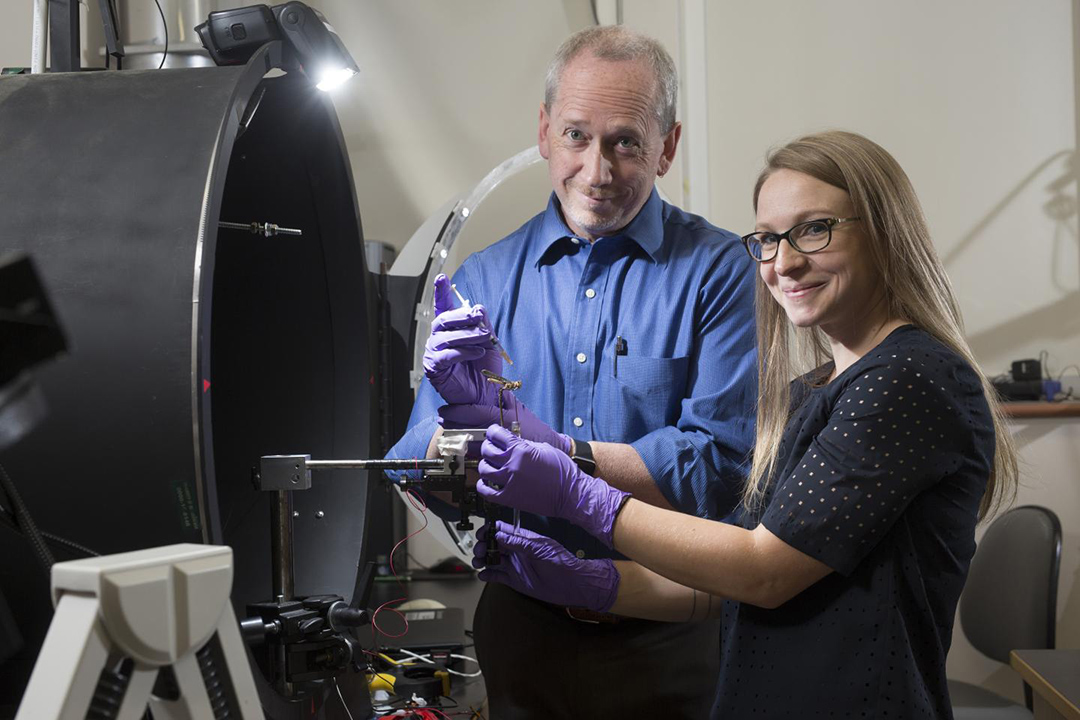
USask research shows tiny traces of neonicotinoid pesticides impair insects’ ability to spot predators
SASKATOON – Traces of neonicotinoid pesticides can impair a flying insects’ ability to spot predators and avoid collisions with objects in their path, new research by the University of Saskatchewan (USask) shows.
Residual traces of these widely-used pesticides can profoundly affect a flying insects’ ability to detect movement—a skill crucial to survival, according to the paper published in the journal NeuroToxicology.
Within an hour of being treated with tiny amounts of neonicotinoids or their metabolites (trace elements present after the insecticide begins to break down), the flying insects did not turn, glide or stop to avoid collision.
“Our findings suggest that very low doses of the pesticide or its metabolic products can profoundly and negatively affect motion detection systems that flying insects, such as locusts, grasshoppers and bees, need for survival,” said Jack Gray, an expert in neural control of animal behavior and vice-dean of research, scholarly and artistic work in USask’s College of Arts and Science.
“Although they are found in the environment, and insects can be exposed to them, metabolites are not typically tested for toxicity. Our results suggest they should be.”
Although neonicotinoids break down into different compounds and can exist in trace amounts in the environment, these levels are typically not tested for toxicity.
Locusts exposed to trace elements of the neonicotinoid imidacloprid were unable to detect object motion in their field of view. When dosed with slightly higher amounts, the locusts were unable to fly straight or failed to take off at all.
The findings by researchers in the USask Department of Biology are part of a wider USask research program into the impact of trace elements of neonicotinoids on flying insects.
In tests on the locust’s nervous systems using electrophysiology, the USask biologists found their motion-detector neurons were less sensitive after being treated. Their ability to process and relay information quickly, and therefore respond quickly while flying, was also impaired.
Using a specially-designed wind tunnel, the research team measured a flying locust’s ability to navigate around simulated approaching objects—a skill crucial to avoiding predators and obstacles such as bushes and trees.
Good vision is crucial to insects’ survival as it allows them to see predators, including larger insects and birds and avoid collisions with other insects or objects in their path.
The research was funded by the Natural Sciences and Engineering Research Council of Canada.
-30-
For more information, contact:
Jennifer Thoma
Media Relations Specialist
University of Saskatchewan
306-966-1851
jennifer.thoma@usask.ca

